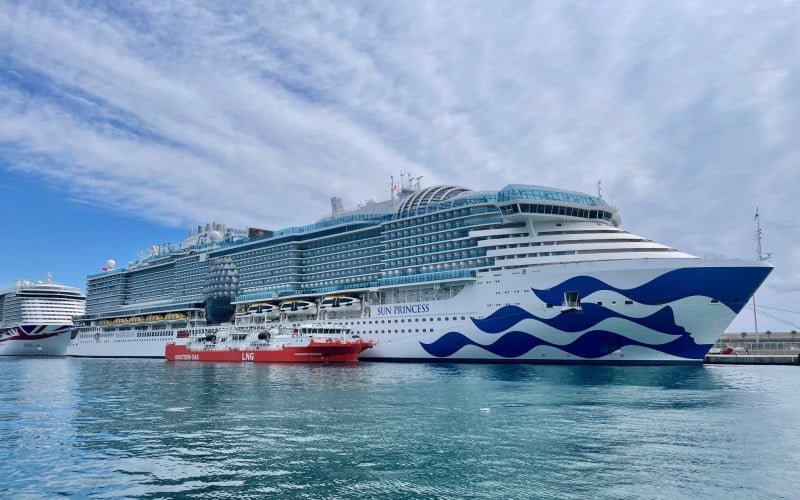Enagás has solidified its position as a leading European operator in the decarbonisation of maritime transport through its substantial supply of liquefied natural gas LNG bunkering. In 2023, the volume of LNG loaded as marine fuel by Enagás operated plants reached 1,359 GWh, marking a significant increase from the 300 GWh recorded in 2021.
This surge in LNG usage has enabled the avoidance of over 74,000 tonnes of CO2 equivalent emissions and the near-elimination of sulphur and nitrogen oxides (SOx and NOx), significantly improving air quality in port environments.
Enagás has achieved this milestone by implementing comprehensive solutions, including adapting its terminals and constructing supply barges via its subsidiary Scale Gas. This strategic positioning has made Enagás the European operator with the highest aggregate loading capacity for LNG.
Success of the Public-Private Partnership
The progress achieved is attributed to the successful public-private partnership in projects like CORE LNGas hive and LNGhive2, co-funded by the European Commission. These initiatives, led by Puertos del Estado and coordinated by Enagás, have established an integrated, safe, and efficient logistics chain for supplying LNG as marine fuel across the Iberian Peninsula.
The Enagás regasification terminal in Barcelona supports direct bunkering operations (pipe to ship, PTS). Since early 2023, with the Haugesund Knutsen, co-owned by Knutsen and Scale Gas, operating in Barcelona, it has also facilitated LNG supply via small vessels (ship to ship, STS). Bunkering operations in the Port of Barcelona alone have prevented 63,000 tonnes of CO2 equivalent emissions.
With the commencement of the Levante LNG bunker vessel, co-owned by Peninsula and Scale Gas, operations at the Enagás plant in Huelva saw an 82% increase in the first four months of 2024 compared to the total supply in 2023. This terminal now loads LNG onto STS supply barges and will soon begin PTS operations. Additionally, Scale Gas, supported by the Spanish Government through Next Generation funds, is constructing a third LNG and BioLNG supply vessel to operate primarily in the Canary Islands from 2026.
The Enagás terminal in Cartagena, a pioneer in Europe for offering PTS services, will soon also provide STS bunkering operations.
Besides these three wholly owned regasification terminals, Enagás’s majority-owned terminals in Spain, such as El Musel in Gijón, Saggas in Sagunto, and BBG in Bilbao, also offer Truck to Ship (TTS) services, with Bilbao additionally providing PTS.
Advancing Sustainable Maritime Transportation in Europe
The decarbonisation of maritime transport is progressing with increasingly ambitious targets. The European Union’s 2023 Regulation 2023/1805 sets annual carbon emission reduction targets, and the International Maritime Organisation (IMO) has revised its strategy to achieve carbon neutrality by 2050.
Compared to traditional maritime fuels, LNG nearly eliminates SOx emissions and reduces NOx emissions by 80-90% and CO2 emissions by 20-30%. By 2030, using LNG as a maritime fuel in Spain could reduce CO2 emissions by about two million tonnes, equivalent to replacing over one million combustion vehicles with electric vehicles.
In response to the growing demand for bunkering, Enagás is offering new solutions to ensure a cleaner, more sustainable future in maritime transport. This includes promoting operations based on BioLNG, thereby enhancing its capacity for emissions reduction.
Source Enagás

